Thermal Energy Transfer
How to Achieve Optimal Thermal Energy Transfer With Heat Pump Design

Seeking methods to enhance the thermal energy transfer efficiency of your heat pump? Search no more!
In this article, we will guide you through the key steps to achieve optimal performance.
From understanding the basics of thermal energy transfer to selecting the right components, we’ll provide you with the knowledge you need to design a heat pump that serves you and your energy needs.
Let’s dive in and unlock the secrets of efficient thermal energy transfer!

Key Takeaways
- Proper heat pump sizing is essential for maximizing energy efficiency and reducing operating costs.
- Regular inspection and cleaning of heat pump components, including the heat exchanger, ensure efficient heat transfer.
- The choice of refrigerant directly impacts the effectiveness and efficiency of thermal energy transfer.
- Design enhancements, such as increasing surface area and using materials with higher thermal conductivity, can improve heat exchanger performance and overall heat pump system performance.
Understanding the Basics of Thermal Energy Transfer in Heat Pumps
Let’s start by exploring the fundamentals of thermal energy transfer in heat pumps.
When it comes to heat pump maintenance and troubleshooting heat pump issues, understanding how thermal energy transfer works is crucial.
Heat pumps transfer thermal energy from one location to another by utilizing a refrigerant and a compressor.
The refrigerant absorbs heat from a low-temperature source, such as the outdoor air or ground, and then passes through the compressor, where the temperature and pressure increase.

This high-temperature, high-pressure refrigerant then releases the absorbed heat into the indoor space.
To ensure optimal thermal energy transfer, it’s important to regularly inspect and clean the heat pump components, including the coils, filters, and fans.
Troubleshooting heat pump issues involves checking for refrigerant leaks, electrical connections, and proper airflow.
Importance of Proper Heat Pump Sizing for Optimal Thermal Energy Transfer
Proper heat pump sizing is essential for achieving optimal thermal energy transfer. When it comes to heat pump design, one can’t underestimate the importance of getting the sizing right.

Here are some key reasons why proper heat pump sizing is crucial for optimal thermal energy transfer:
-
Energy Efficiency: A properly sized heat pump ensures that it operates at its peak efficiency, maximizing energy savings and reducing operating costs.
-
Comfort: Proper sizing ensures that the heat pump adequately heats or cools the space, providing optimal comfort levels.
-
Reduced Wear and Tear: Oversized or undersized heat pumps can lead to increased wear and tear, shortening the lifespan of the unit.

-
Heat Pump Insulation: Proper sizing takes into account the insulation of the space, ensuring that the heat pump can effectively transfer thermal energy without any losses.
Key Components and Their Role in Thermal Energy Transfer in Heat Pumps
The compressor plays a crucial role in the thermal energy transfer process within a heat pump. It’s responsible for increasing the pressure and temperature of the refrigerant, allowing for efficient heat exchange.
Heat exchanger efficiency is another key component that affects thermal energy transfer. A well-designed and properly sized heat exchanger ensures maximum heat transfer between the refrigerant and the surrounding environment.
Additionally, the choice of refrigerant is of utmost importance as it directly impacts the efficiency and effectiveness of thermal energy transfer in heat pumps.
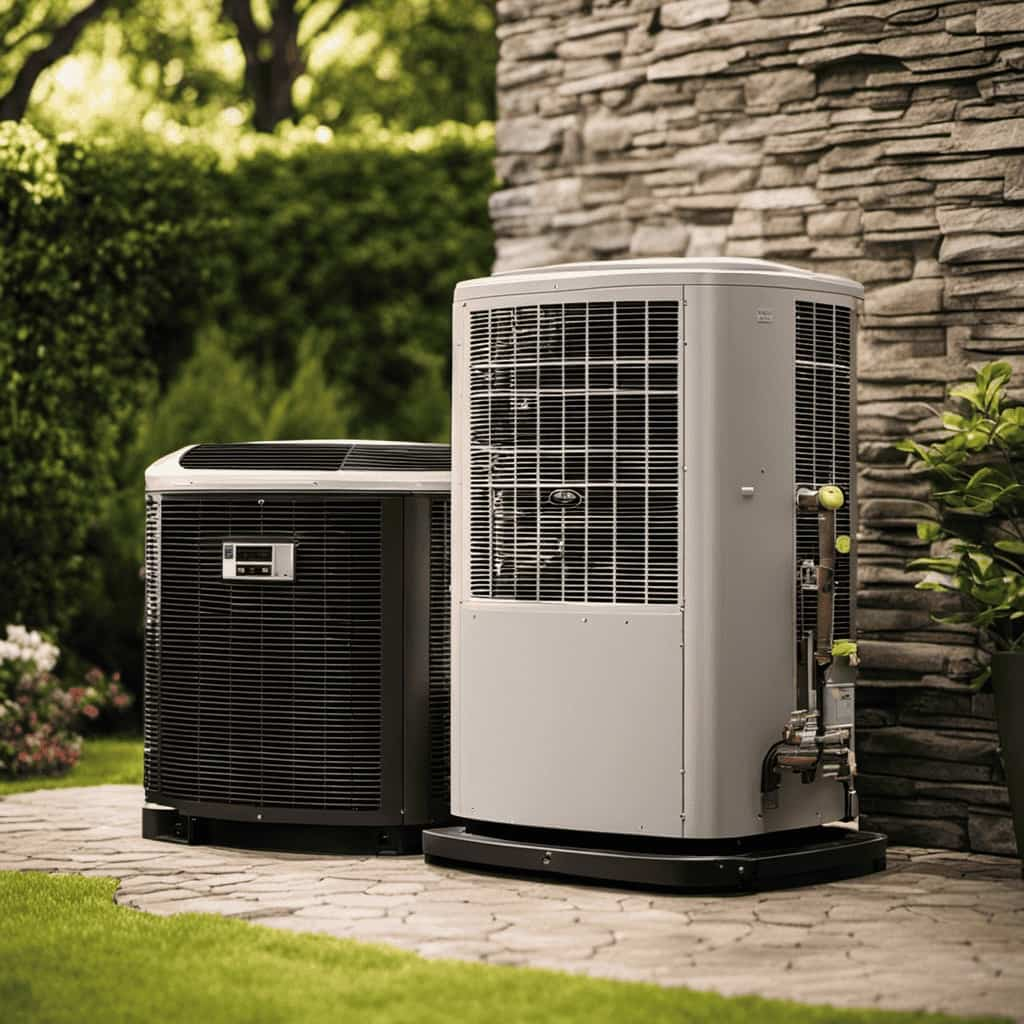
Compressor’s Role in Transfer
Our compressor plays a crucial role in transferring thermal energy efficiently in heat pumps. It’s responsible for compressing the refrigerant, which increases its temperature and pressure, allowing it to absorb heat from the surroundings.
Here are some key components and their roles in thermal energy transfer:
-
Compressor efficiency: The efficiency of the compressor affects the overall performance of the heat pump. A more efficient compressor can transfer thermal energy more effectively, resulting in lower energy consumption and higher system performance.
-
Refrigerant properties: The choice of refrigerant is essential for optimal thermal energy transfer. Refrigerants with high heat transfer coefficients and low boiling points can enhance the heat pump’s efficiency by facilitating faster heat absorption and release.

-
Motor: The compressor’s motor powers the compression process, allowing the refrigerant to circulate and transfer thermal energy. The motor’s efficiency and power output impact the overall efficiency and performance of the heat pump.
-
Pressure relief valve: This safety component ensures that the compressor doesn’t exceed its maximum pressure limit, preventing damage to the system and ensuring safe operation.
Heat Exchanger Efficiency
To achieve optimal thermal energy transfer in heat pumps, we must understand the key components and their role in heat exchanger efficiency.
The heat exchanger is a critical component that plays a vital role in the overall performance of a heat pump system. It’s responsible for transferring heat between the refrigerant and the surrounding medium, whether it be air, water, or another fluid.

Maintaining the heat exchanger is essential for ensuring its efficiency over time. Regular heat exchanger maintenance, such as cleaning and inspection, can help prevent fouling and blockages that can impede heat transfer.
Additionally, improving heat exchanger performance can be achieved through design enhancements, such as increasing the surface area for heat transfer or using materials with higher thermal conductivity.
Importance of Refrigerant
One of the key components that plays a crucial role in thermal energy transfer in heat pumps is the refrigerant. Proper refrigerant selection is essential for achieving optimal heat pump performance. The refrigerant properties determine its ability to absorb and release thermal energy efficiently.
Here are some important factors to consider when choosing a refrigerant:
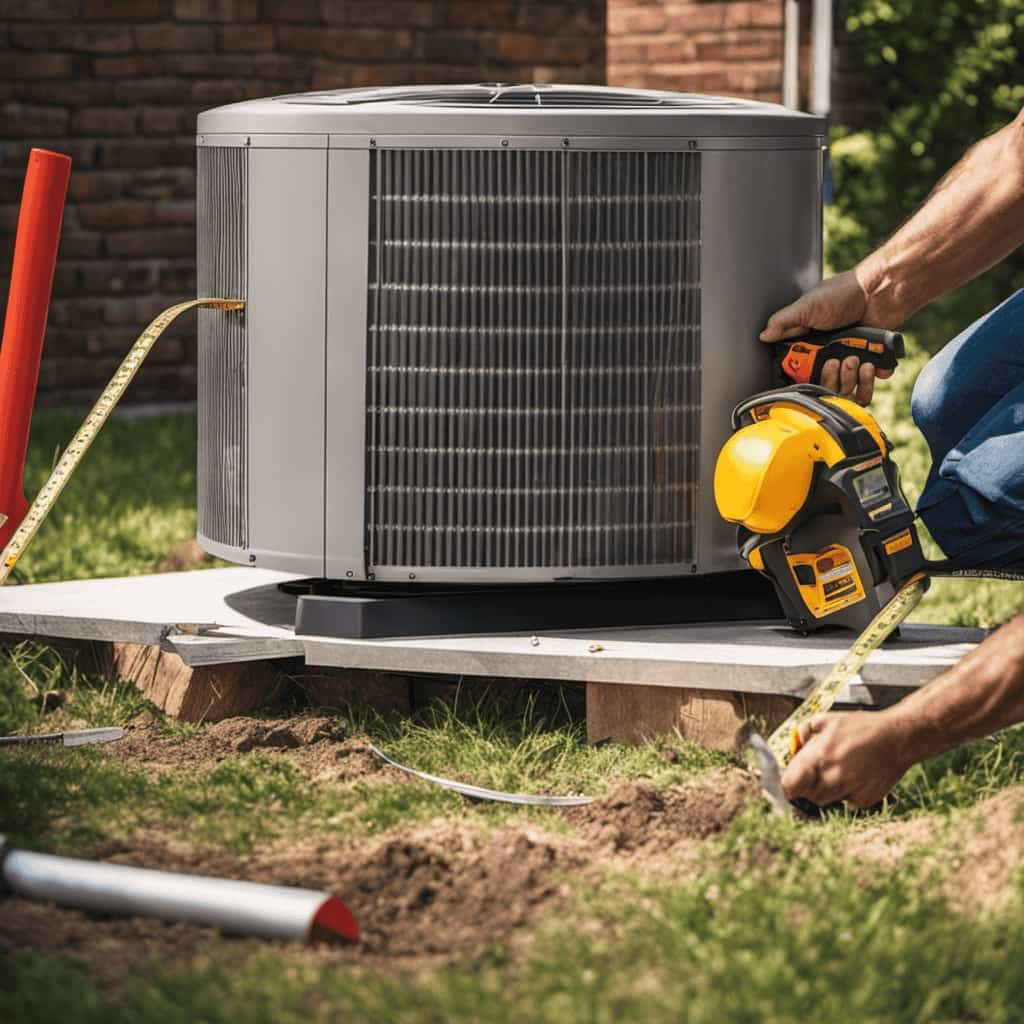
-
Thermodynamic properties: The refrigerant should have a high heat capacity and low boiling point to facilitate efficient heat transfer.
-
Environmental impact: It’s important to select a refrigerant with low global warming potential (GWP) and ozone depletion potential (ODP) to minimize environmental harm.
-
Safety considerations: The refrigerant should have low toxicity and flammability to ensure safe operation.
-
Compatibility with system components: The refrigerant should be compatible with the heat pump’s components, such as the compressor, condenser, and evaporator, to prevent damage and ensure long-term reliability.

Proper refrigerant selection based on these factors is crucial for achieving optimal thermal energy transfer and maximizing the efficiency of heat pump systems.
Optimizing Heat Exchanger Design for Efficient Thermal Energy Transfer
We can optimize heat exchanger design by considering factors such as surface area, fluid flow rate, and material conductivity. Heat exchangers play a crucial role in efficient thermal energy transfer in heat pump systems.
The choice of heat exchanger materials is essential for achieving optimal performance. Materials with high thermal conductivity, such as copper or aluminum, are commonly used due to their ability to efficiently transfer heat.
Additionally, the design should aim to maximize the surface area available for heat exchange to enhance the transfer efficiency. This can be achieved through the use of finned tubes or extended surfaces.

Furthermore, the fluid flow rate within the heat exchanger should be carefully controlled to ensure efficient heat transfer.
Selecting the Right Refrigerant for Enhanced Thermal Energy Transfer
When selecting a refrigerant for enhanced thermal energy transfer, it’s crucial to consider its thermodynamic properties and environmental impact. The right refrigerant can greatly optimize thermal conductivity, resulting in improved performance and energy efficiency.
Here are some key factors to consider in refrigerant selection for thermal conductivity optimization:
-
Thermodynamic properties: Look for refrigerants with high heat transfer coefficients and low boiling points to maximize thermal energy transfer.
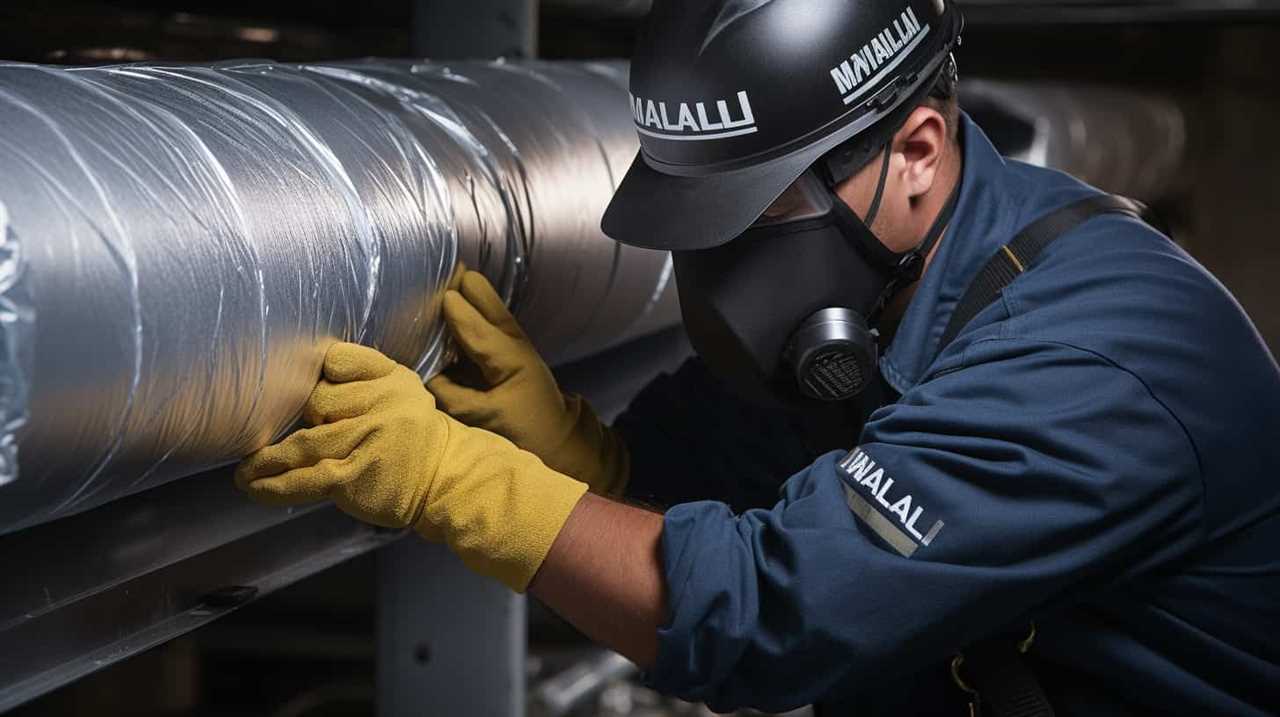
-
Compatibility: Ensure the selected refrigerant is compatible with the heat pump system components to avoid any operational issues.
-
Environmental impact: Choose refrigerants with low global warming potential (GWP) and ozone depletion potential (ODP) to minimize the ecological footprint.
-
Safety: Consider the flammability and toxicity properties of the refrigerant to ensure the safety of the system operators and users.
Strategies for Minimizing Heat Loss in Heat Pump Systems
How can we effectively minimize heat loss in heat pump systems?

One of the key strategies is to focus on heat pump insulation. By properly insulating the heat pump and its components, we can significantly reduce heat loss and improve overall energy efficiency. This can be achieved by using high-quality insulation materials and ensuring proper installation techniques.
Additionally, implementing minimizing heat loss techniques such as sealing any air leaks or gaps in the system can further enhance its performance.
It’s also important to consider the placement of the heat pump and its exposure to external elements, as this can impact heat loss.
Maximizing Heat Transfer Surface Area for Improved Thermal Energy Transfer
To maximize thermal energy transfer, it’s crucial to regularly clean and maintain the heat transfer surfaces of the heat pump. By doing so, we can ensure optimal heat pump efficiency and improve overall system performance.

Here are some key factors to consider in maximizing heat transfer surface area for improved thermal energy transfer:
-
Surface Cleanliness: Regularly cleaning the heat transfer surfaces removes any dirt, debris, or scaling that could hinder heat transfer and reduce efficiency.
-
Surface Coatings: Applying a high thermal conductivity coating to the heat transfer surfaces can enhance heat transfer by improving the surface’s ability to conduct heat.
-
Surface Expansion: Increasing the surface area of the heat transfer surfaces, such as using fins or extended surfaces, can maximize heat transfer by providing more contact area for heat exchange.

-
Surface Material Selection: Choosing materials with high thermal conductivity factors for the heat transfer surfaces can enhance heat transfer efficiency.
The Impact of Airflow on Thermal Energy Transfer in Heat Pumps
Proper airflow is crucial for maximizing thermal energy transfer in heat pumps. By ensuring that air is efficiently directed over the heat transfer surfaces, we can optimize the heat exchange process.
Techniques such as using properly designed fans, optimizing ductwork, and implementing variable speed drives can enhance airflow efficiency and improve overall system performance. These measures contribute to maximizing the thermal energy transfer capabilities of heat pumps, resulting in higher efficiency and greater energy savings.
Importance of Proper Airflow
We must ensure sufficient airflow within heat pumps to maximize thermal energy transfer efficiency. Proper airflow management and ventilation techniques are essential for the optimal operation of heat pumps. Here are some key reasons why airflow is crucial for thermal energy transfer:
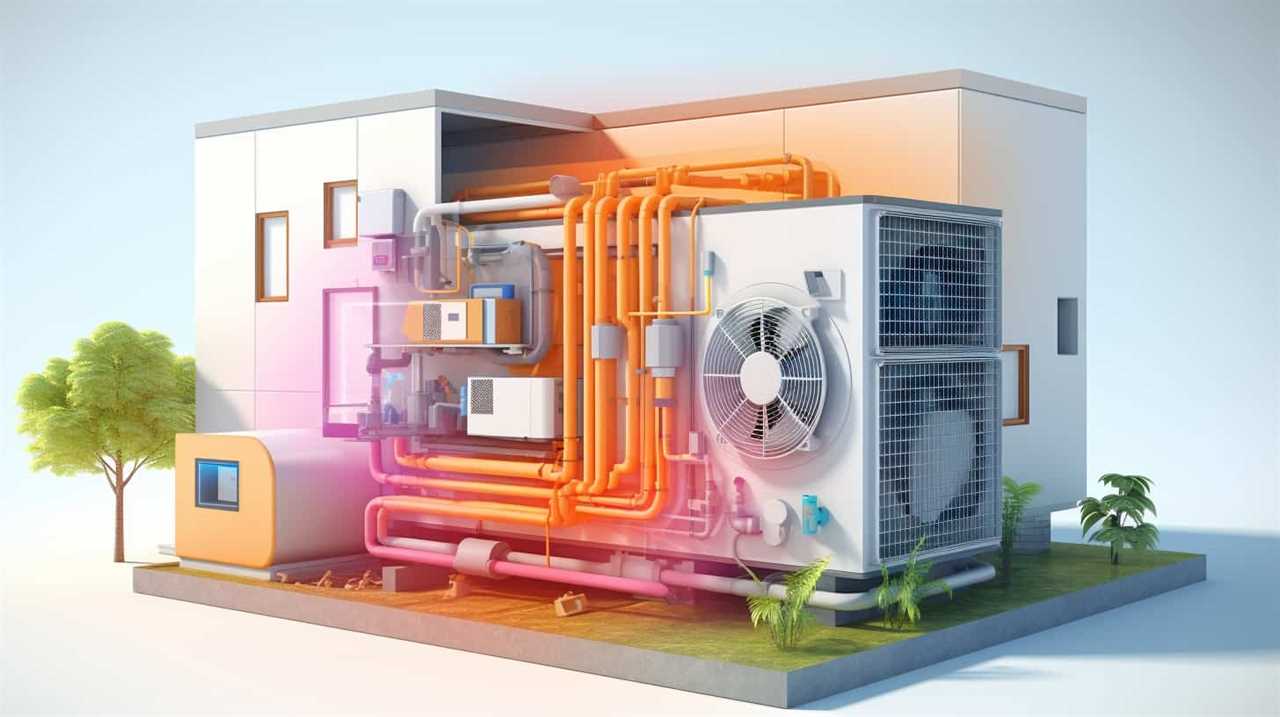
-
Heat exchange efficiency: Adequate airflow allows for efficient heat transfer between the evaporator and condenser coils, ensuring optimal performance of the heat pump.
-
Heat dissipation: Sufficient airflow helps in dissipating the heat generated during the heat pump’s operation, preventing overheating and ensuring its longevity.
-
Air quality control: Proper airflow helps in maintaining good indoor air quality by facilitating the removal of pollutants and ensuring proper ventilation.
-
Frost prevention: Adequate airflow prevents frost accumulation on the evaporator coil, enhancing the heat pump’s efficiency and preventing potential damage.
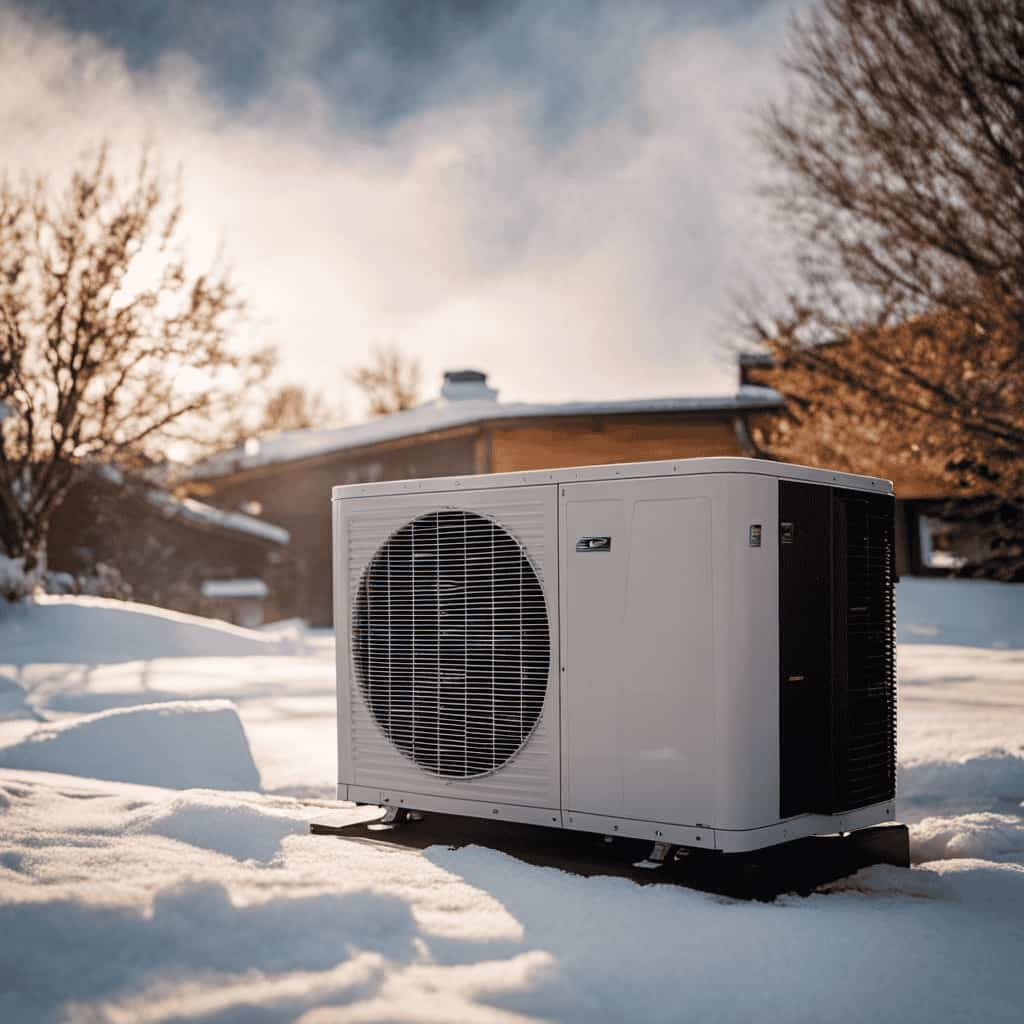
Airflow Efficiency Techniques
By optimizing airflow and implementing effective ventilation strategies, we can significantly enhance the thermal energy transfer capabilities of heat pumps. Airflow management plays a crucial role in ensuring optimal heat pump performance and efficiency. Proper airflow helps to remove heat from the system, preventing heat buildup and improving the overall heat transfer process.
One important aspect of airflow management is heat pump insulation. Insulation helps to minimize heat loss or gain during the heat transfer process, ensuring that the desired temperature is maintained. It also helps to reduce energy consumption and improve the system’s ability to maintain a consistent temperature.
Maximizing Thermal Energy Transfer
To effectively maximize thermal energy transfer in heat pumps, it’s essential to consistently and strategically monitor and adjust the airflow. By optimizing the airflow, we can enhance heat pump efficiency and improve overall performance.
Here are some key considerations for maximizing thermal energy transfer:

-
Maintain proper airflow: Ensuring a steady flow of air through the heat pump is crucial for efficient heat transfer. Regularly clean and inspect the filters to prevent blockages that can impede airflow.
-
Optimize fan speed: Adjusting the fan speed can help achieve optimal heat transfer. Higher speeds can increase heat exchange, but they may also consume more energy. Finding the right balance is essential.
-
Control air direction: Properly directing the airflow can improve heat pump performance. By redirecting the air towards the heat exchanger, we can enhance heat transfer and maximize efficiency.
-
Consider ductwork design: The design and layout of the ductwork can significantly impact thermal energy transfer. Ensure that the ducts are properly sized and insulated to minimize heat loss and maximize transfer efficiency.

Balancing Temperature Differentials for Optimal Thermal Energy Transfer
Achieving a balanced temperature differential is crucial for optimizing thermal energy transfer in heat pump design. Balancing temperature gradients ensures that the heat pump operates at its highest efficiency, maximizing heat transfer from the heat source to the heat sink.
When the temperature differential is too high, it can result in decreased performance and reduced energy efficiency. On the other hand, if the temperature differential is too low, it can lead to inadequate thermal energy transfer and inefficient operation of the heat pump.
To achieve optimal thermal energy transfer, it’s important to carefully consider and design the heat exchangers, refrigerant flow rates, and control systems, ensuring that the temperature differentials are balanced for optimal heat pump performance. By balancing the temperature gradients, we can ensure efficient heat transfer and maximize the overall performance of the heat pump system, ultimately leading to optimal thermal energy transfer.
In the next section, we’ll discuss the importance of maintaining and monitoring heat pump efficiency for long-term thermal energy transfer.

Maintaining and Monitoring Heat Pump Efficiency for Long-Term Thermal Energy Transfer
We can ensure long-term thermal energy transfer by regularly maintaining and monitoring the efficiency of our heat pump system. Proper heat pump maintenance is essential for maximizing energy efficiency and minimizing potential issues. Here are some key steps to consider:
- Regularly clean and replace air filters to ensure proper airflow and prevent dust build-up.
- Schedule routine inspections and maintenance by a qualified technician to identify and address any potential issues.
- Monitor and adjust refrigerant levels to optimize heat transfer efficiency.
- Keep outdoor units clear of debris and maintain proper airflow around the unit.
By following these maintenance practices, we can ensure that our heat pump operates at peak efficiency, maximizing thermal energy transfer and reducing energy consumption.
Regular monitoring and maintenance not only prolong the lifespan of the heat pump but also contribute to a more sustainable and cost-effective heating and cooling system.
Frequently Asked Questions
How Does the Size of a Heat Pump Affect Its Thermal Energy Transfer Efficiency?
The size of a heat pump directly affects its thermal energy transfer efficiency. By carefully selecting the appropriate heat pump size, we can optimize the system’s performance and ensure efficient and effective heat transfer.
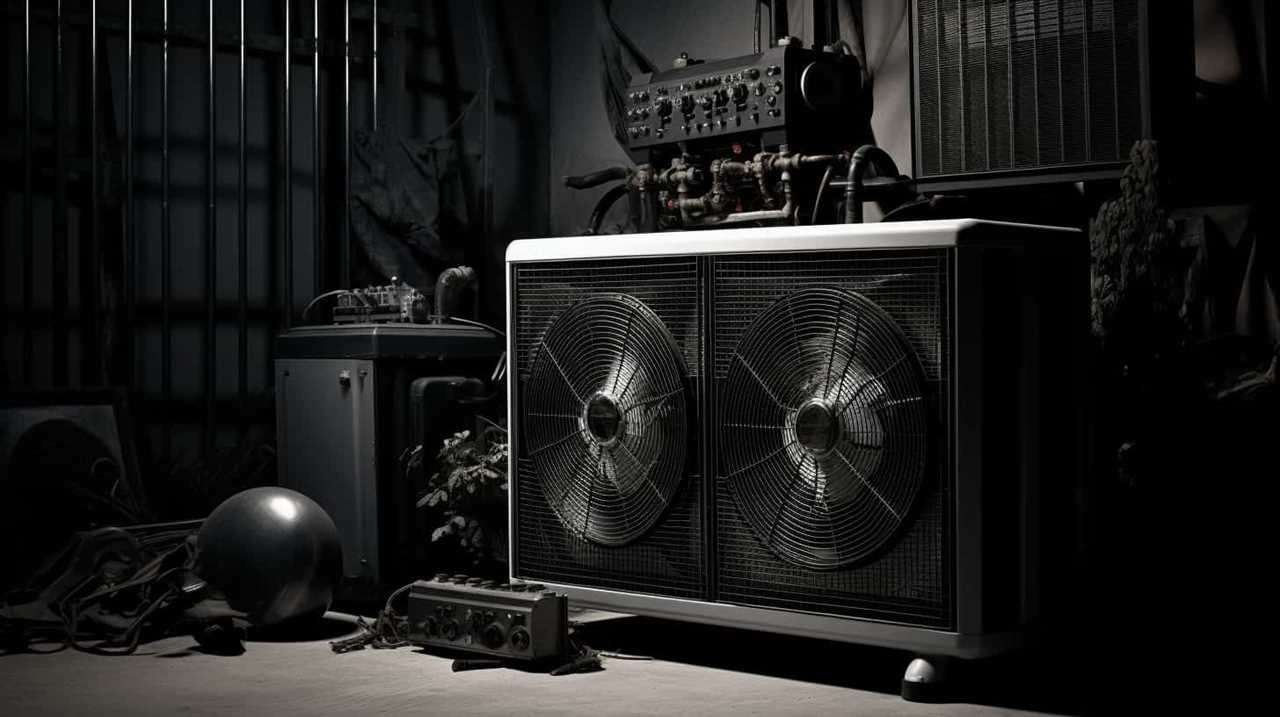
What Are the Main Components of a Heat Pump and How Do They Contribute to Thermal Energy Transfer?
To achieve optimal thermal energy transfer, the main components of a heat pump, such as the compressor, evaporator, and condenser, work together to efficiently transfer heat from a lower temperature source to a higher temperature sink.
Which Refrigerant Is the Best Choice for Maximizing Thermal Energy Transfer in a Heat Pump?
The best refrigerant for maximizing thermal energy transfer in a heat pump depends on factors such as heat pump size and desired efficiency. It is important to choose a refrigerant that has a high heat transfer coefficient and low environmental impact.
What Are Some Strategies for Minimizing Heat Loss in a Heat Pump System?
To minimize heat loss in a heat pump system, we must prioritize insulation in our design. Proper insulation is crucial for optimal thermal energy transfer and ensuring efficient operation.
How Can Airflow Impact Thermal Energy Transfer in Heat Pumps and What Can Be Done to Optimize It?
Airflow plays a crucial role in thermal energy transfer in heat pumps. By optimizing airflow, we can maximize heat transfer efficiency. Insulation impacts heat loss, while the condenser’s role is to release heat to the surrounding environment.
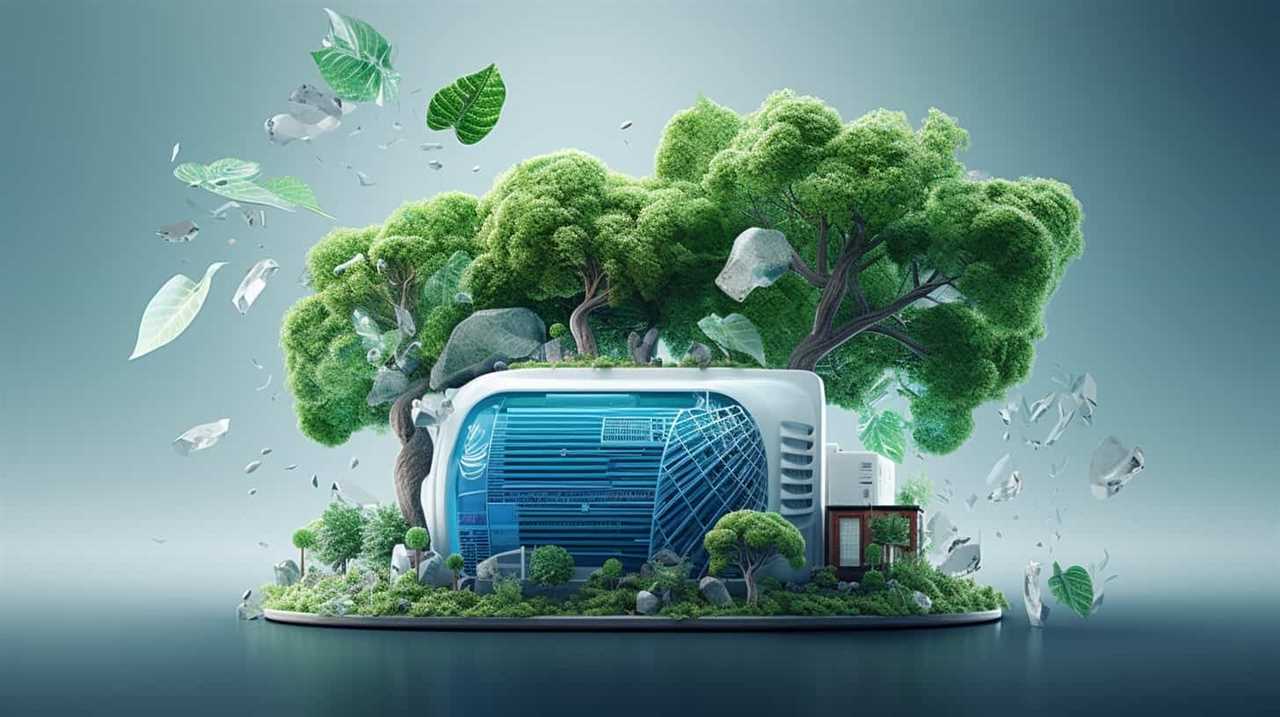
Conclusion
In conclusion, achieving optimal thermal energy transfer in heat pump design requires a thorough understanding of the basics. This includes proper sizing, key component selection, efficient heat exchanger design, and the right refrigerant choice.
Additionally, maximizing heat transfer surface area, managing airflow, and balancing temperature differentials are essential considerations.
While some may argue that these considerations make the design process more complex, it’s crucial to emphasize that addressing each factor diligently will result in improved efficiency and long-term thermal energy transfer.
Thermal Energy Transfer
Boost Heat Pump Efficiency: Renewable Energy’s Unexpected Power

Are you prepared to unleash the complete capabilities of your heat pump? Search no more! In this article, we will delve into the surprising impact of renewable energy on enhancing heat pump effectiveness.
Get ready to revolutionize your heating system as we delve into the role of solar energy, harnessing geothermal power, the game-changing wind energy, sustainable biomass solutions, and the untapped potential of hydropower.
Prepare to master the art of maximizing heat pump performance with the help of renewable energy sources.
Key Takeaways
- Solar panel integration allows for the direct conversion of sunlight into electricity, reducing reliance on traditional power sources.
- Geothermal energy can maximize heat pump performance by providing heat stored beneath the Earth’s surface, leading to higher levels of efficiency.
- Wind power can revolutionize heat pump efficiency by generating electricity to power heat pumps, reducing their carbon footprint.
- Biomass combined with heat pump technology greatly enhances efficiency and sustainability, reducing reliance on fossil fuels and emitting fewer greenhouse gases.
The Role of Solar Energy in Enhancing Heat Pump Efficiency
We can enhance heat pump efficiency by utilizing solar energy. Solar panel integration plays a crucial role in harnessing renewable energy for heat pumps. By connecting solar panels to heat pump systems, we can directly convert sunlight into electricity, reducing reliance on traditional power sources. This integration allows heat pumps to operate more efficiently, as they can draw power from the solar panels during daylight hours.

Additionally, energy storage solutions can further optimize heat pump performance. Storing excess solar energy in batteries or other storage systems ensures a continuous power supply for heat pumps, even when sunlight is limited.
This combination of solar panel integration and energy storage solutions maximizes the utilization of renewable energy, significantly improving heat pump efficiency.
Harnessing Geothermal Power to Maximize Heat Pump Performance
One way to maximize heat pump performance is by harnessing the power of geothermal energy. Geothermal energy is heat that is stored beneath the Earth’s surface in geothermal reservoirs. This heat can be extracted and used to provide heating and cooling for buildings. Geothermal innovations have made it possible to tap into this renewable energy source and optimize the efficiency of heat pumps.
By utilizing geothermal energy, heat pumps can achieve higher levels of efficiency compared to traditional heating and cooling systems. The table below illustrates the advantages of harnessing geothermal power for heat pump performance:
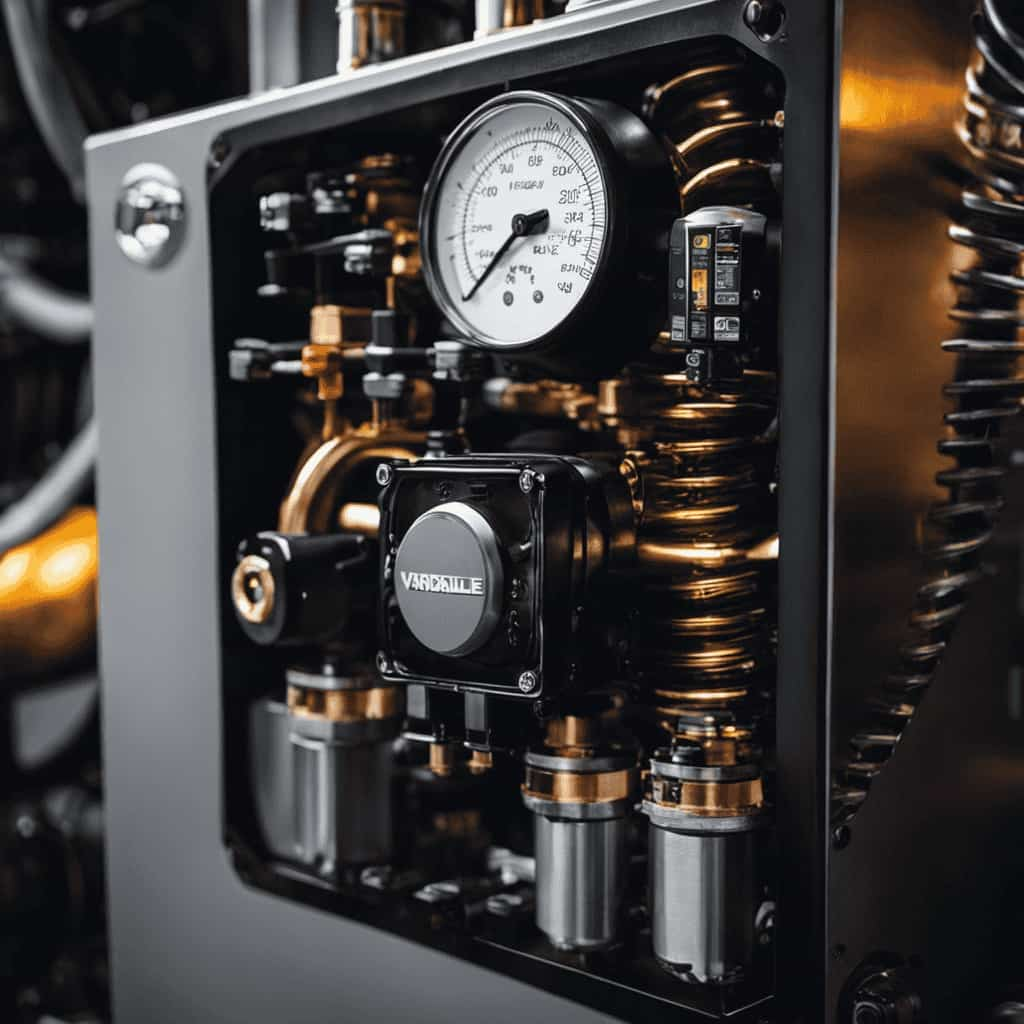
| Advantages of Geothermal Power for Heat Pump Performance |
|---|
| Higher efficiency |
| Reduced energy consumption |
| Lower operating costs |
| Environmentally friendly |
Harnessing geothermal power not only improves the performance of heat pumps but also contributes to a more sustainable and energy-efficient future. By utilizing the abundant geothermal resources available, we can maximize the efficiency of heat pumps and reduce our carbon footprint.
Wind Energy: A Game-Changer for Heat Pump Efficiency
Harnessing wind energy can revolutionize heat pump efficiency.
Wind energy has the potential to be a game changer for heat pump technology, offering significant benefits to renewable energy solutions.
By utilizing wind power to generate electricity, heat pumps can operate more efficiently and reduce their carbon footprint.

Wind turbines can produce large amounts of electricity, which can be used to power heat pumps, allowing them to operate at higher efficiencies.
Additionally, wind energy is a clean and renewable source, making it an environmentally friendly option for heat pump systems.
The integration of wind energy into heat pump technology enhances the overall performance and sustainability of these systems.
Biomass: A Sustainable Solution for Boosting Heat Pump Efficiency
Using biomass as a renewable fuel source and combining it with heat pump technology can greatly enhance efficiency and sustainability. Biomass, which refers to organic materials such as wood, agricultural residues, and dedicated energy crops, offers a promising alternative fuel for heat pumps. By harnessing the energy stored in biomass, heat pumps can provide a reliable and efficient heating solution while reducing reliance on fossil fuels. The innovative combination of biomass and heat pump technology allows for a more sustainable heating system that emits fewer greenhouse gases and decreases overall energy consumption. To illustrate the potential benefits of this approach, consider the table below, which compares the energy efficiency and carbon emissions of biomass-powered heat pumps to conventional heating systems.
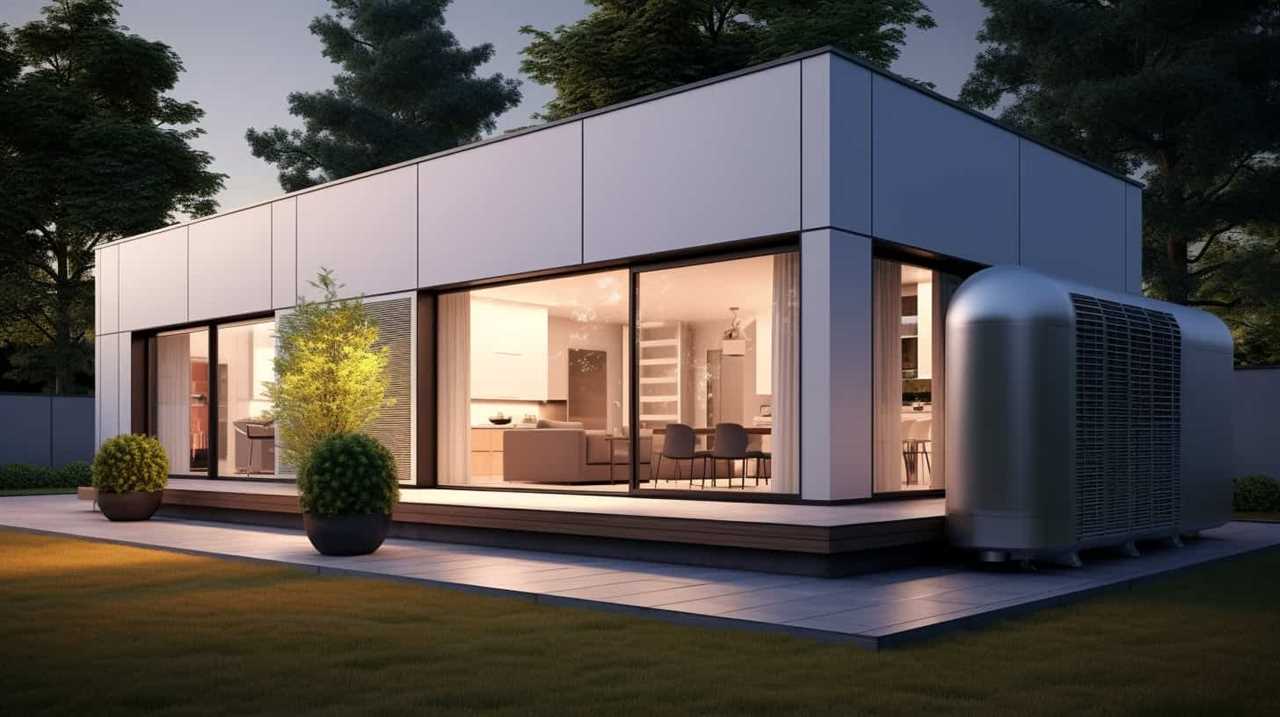
| Heating System | Energy Efficiency (COP) | Carbon Emissions (kgCO2/MWh) |
|---|---|---|
| Biomass Heat Pump | 4.5 | 10 |
| Natural Gas Boiler | 0.9 | 200 |
| Oil Boiler | 0.85 | 250 |
| Electric Resistance | 1 | 500 |
| Air-Source Heat Pump | 3 | 60 |
As shown in the table, biomass heat pumps have a significantly higher energy efficiency and lower carbon emissions compared to other heating systems. This makes them an attractive and sustainable solution for boosting heat pump efficiency.
Hydropower: Unleashing the Potential of Water to Improve Heat Pump Performance
We can maximize heat pump performance by tapping into the immense potential of hydropower, using water as a renewable energy source. Hydropower, also known as hydroelectric power, offers several advantages in improving heat pump efficiency.
- Water Efficiency:
- Hydropower utilizes the natural flow of water, harnessing its kinetic energy to generate electricity.
- This process doesn’t consume water, making it a highly water-efficient energy source.
- Heat pumps can benefit from this water efficiency by leveraging hydropower for their operations, reducing overall water consumption.
- Hydroelectric Power:
- Hydropower plants can generate a significant amount of electricity, providing a reliable and consistent power source for heat pumps.
- The scalability of hydropower allows for large-scale generation, accommodating the increasing demand for heat pump installations.
- By integrating hydropower into heat pump systems, we can enhance their performance and contribute to a more sustainable and efficient energy ecosystem.
Harnessing the power of water through hydropower can significantly improve heat pump performance, ensuring optimal energy utilization and reducing environmental impact.
Frequently Asked Questions
What Are the Key Factors to Consider When Choosing a Heat Pump for Optimal Efficiency?
When choosing a heat pump for optimal efficiency, key factors to consider include heat pump installation and heat pump sizing. These factors play a crucial role in maximizing energy efficiency and ensuring optimal performance.
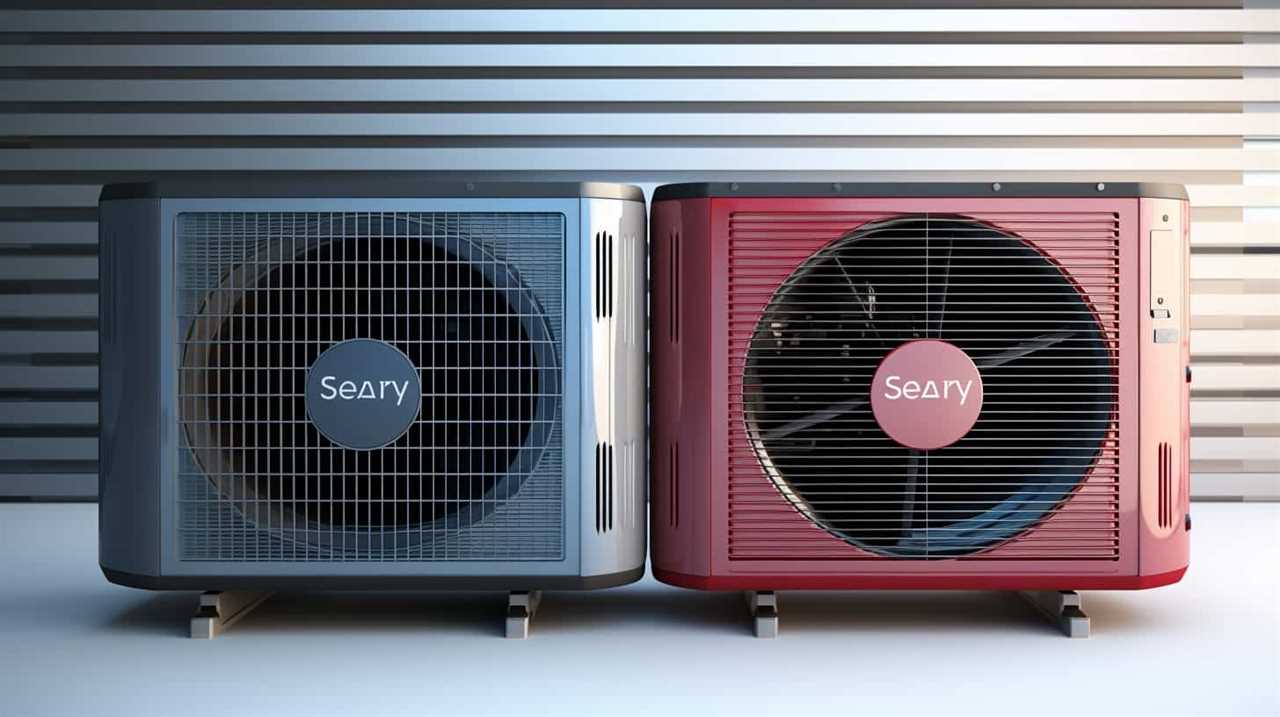
Can Heat Pumps Be Used in All Types of Climates or Are They More Suitable for Specific Regions?
Heat pumps can be used in all types of climates, but their efficiency may vary in extreme conditions. Some limitations include reduced performance in very cold regions and the need for additional heating sources.
Are There Any Government Incentives or Tax Credits Available for Installing Heat Pumps?
There are government incentives and tax credits available for installing heat pumps. These incentives can significantly reduce the upfront cost and make renewable energy more accessible to homeowners and businesses.
How Long Does It Typically Take for a Heat Pump to Pay for Itself in Terms of Energy Savings?
The heat pump payback period depends on various factors, including energy costs, climate, and insulation. It typically takes about 5-10 years for a heat pump to pay for itself in terms of energy savings.
Are There Any Maintenance Requirements or Recommended Practices to Ensure the Long-Term Efficiency of a Heat Pump?
To ensure long-term efficiency, heat pumps require regular maintenance and adherence to recommended practices. These include cleaning or replacing air filters, checking refrigerant levels, and inspecting electrical components. Neglecting these requirements can result in decreased performance and higher energy consumption.

Conclusion
In conclusion, renewable energy sources such as solar, geothermal, wind, biomass, and hydropower play a crucial role in boosting heat pump efficiency.
One interesting statistic to note is that harnessing solar energy can increase heat pump performance by up to 40%, while utilizing geothermal power can improve efficiency by up to 50%.
These renewable energy solutions not only provide sustainable alternatives to traditional heating methods but also contribute to a more energy-efficient and environmentally friendly future.
Thermal Energy Transfer
Decoding Heat Pumps’ Energy Efficiency Ratings: A Guide

Welcome to our guide on understanding the energy efficiency ratings of heat pumps! Have you ever been confused by the numbers and acronyms? We’re here to assist you.
In this article, we’ll break down the importance of energy efficiency ratings, how they’re calculated, and the key metrics to look out for.
We’ll also provide tips on maximizing your heat pump’s performance.
So, let’s dive in and uncover the secrets to choosing the most efficient heat pump for your needs.
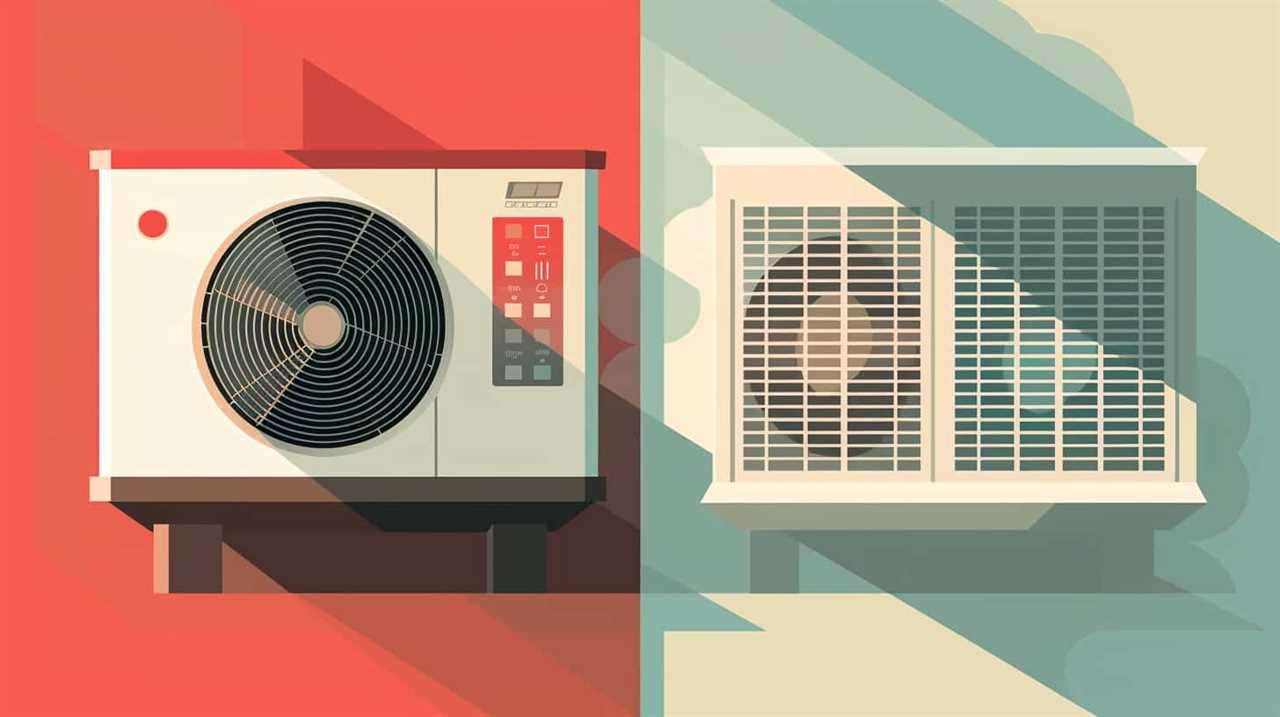
Key Takeaways
- Energy efficiency ratings are important in determining the effectiveness and cost savings of heat pumps.
- Higher efficiency ratings indicate lower energy consumption and can lead to reduced energy bills.
- Heat pumps with higher efficiency ratings often qualify for rebates and incentives.
- Evaluating energy efficiency ratings helps in making informed decisions and maximizing the benefits of heat pumps.
The Importance of Energy Efficiency Ratings in Heat Pumps
We believe that energy efficiency ratings play a crucial role in determining the effectiveness of heat pumps. When evaluating energy savings and long-term cost benefits, it’s important to consider the efficiency rating of a heat pump.
An energy efficiency rating provides a measure of how effectively a heat pump converts electricity into heat. Higher efficiency ratings indicate that the heat pump is more efficient in converting energy, resulting in lower energy consumption and ultimately, cost savings.
By choosing a heat pump with a high energy efficiency rating, homeowners can reduce their energy bills and minimize their environmental impact. Additionally, heat pumps with higher efficiency ratings often qualify for rebates and incentives, further enhancing the long-term cost benefits.
Evaluating energy efficiency ratings is therefore essential in making informed decisions and maximizing the benefits of heat pump technology.

How Energy Efficiency Ratings Are Calculated for Heat Pumps
To determine the energy efficiency rating of a heat pump, manufacturers use standardized testing procedures to measure its performance and calculate the ratio of heat output to electricity input. This calculation process takes into account various factors that affect the efficiency of the heat pump.
Here are some of the factors considered:
- Seasonal Energy Efficiency Ratio (SEER): This measures the cooling efficiency of the heat pump during the cooling season.
- Heating Seasonal Performance Factor (HSPF): This measures the heating efficiency of the heat pump during the heating season.
- Coefficient of Performance (COP): This measures the overall efficiency of the heat pump by considering both the cooling and heating modes.
Understanding SEER and HSPF: Key Energy Efficiency Metrics for Heat Pumps
SEER and HSPF are important energy efficiency metrics that help consumers understand the performance of heat pumps.
When it comes to evaluating the energy efficiency of heat pumps, it’s essential to understand the differences between SEER and HSPF ratings.

SEER, or Seasonal Energy Efficiency Ratio, measures the cooling efficiency of the heat pump. It calculates the amount of cooling output divided by the energy input over a cooling season. The higher the SEER rating, the more energy-efficient the heat pump is in cooling mode.
On the other hand, HSPF, or Heating Seasonal Performance Factor, measures the heating efficiency of the heat pump. It calculates the amount of heating output divided by the energy input over a heating season. A higher HSPF rating indicates better heating efficiency.
Both SEER and HSPF ratings are important when evaluating the energy efficiency of heat pumps. The choice between the two depends on the climate and the specific heating and cooling needs of the consumer. In warmer climates, where cooling demands are higher, SEER rating becomes more important. In colder climates, where heating demands are higher, HSPF rating is more significant.
To make an informed decision, it’s crucial to consider both SEER and HSPF ratings in order to choose a heat pump that meets your specific energy efficiency needs.

Comparing Energy Efficiency Ratings: What to Look for in Heat Pump Models
When comparing energy efficiency ratings, it’s important to regularly and carefully examine the different features of heat pump models. Here are three key aspects to consider when evaluating energy efficiency in heat pump models:
-
Seasonal Energy Efficiency Ratio (SEER): This rating measures the cooling efficiency of the heat pump. Look for a higher SEER rating, as it indicates better energy efficiency and lower operating costs during the cooling season.
-
Heating Seasonal Performance Factor (HSPF): HSPF measures the heating efficiency of the heat pump. A higher HSPF rating means better energy efficiency and lower heating costs during the heating season.
-
Energy Star Certification: Look for heat pump models that have earned the Energy Star certification. These models meet strict energy efficiency guidelines set by the Environmental Protection Agency (EPA) and can help you save on energy usage and costs.
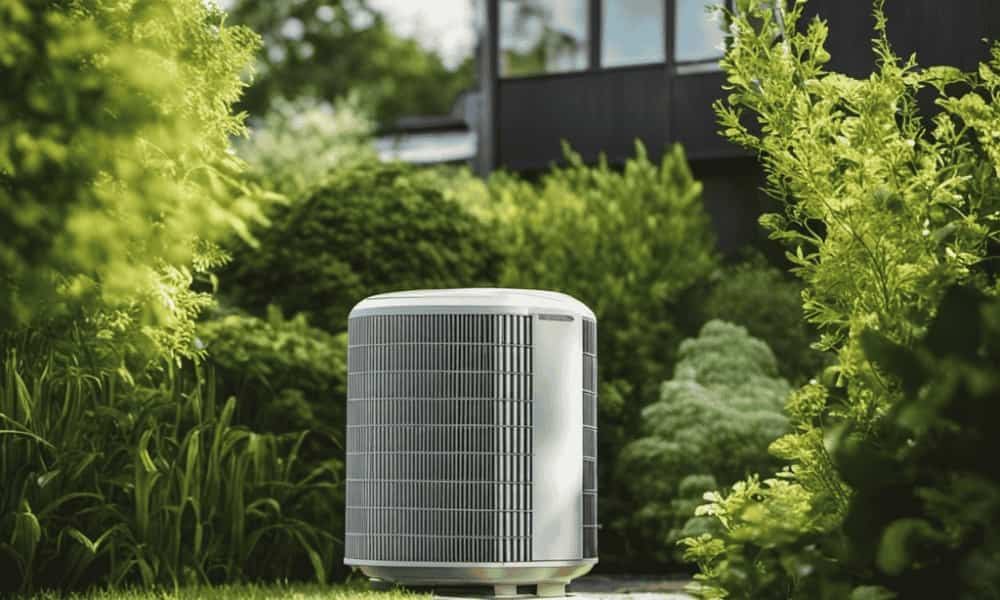
By considering these factors, you can make an informed decision when selecting a heat pump model that prioritizes energy efficiency.
In the next section, we’ll explore tips for maximizing energy efficiency and improving heat pump performance.
Maximizing Energy Efficiency: Tips for Improving Heat Pump Performance
To ensure that we get the most out of our heat pump and maximize its energy efficiency, we should implement these tips for improving its performance. First, regular maintenance is crucial for optimal operation. This includes cleaning or replacing air filters, inspecting and cleaning coils, and checking refrigerant levels. By keeping our heat pump in top condition, we can ensure that it operates efficiently and effectively. Additionally, optimizing the settings on our heat pump can make a significant difference in energy efficiency. Adjusting the thermostat to an appropriate temperature and utilizing programmable settings can help reduce energy consumption. It is also important to consider the size and placement of our heat pump, as these factors can impact its efficiency. By following these tips, we can improve the performance of our heat pump and save on energy costs.
| Tips for Improving Heat Pump Performance |
|---|
| Regular maintenance such as cleaning or replacing air filters, inspecting and cleaning coils, and checking refrigerant levels. |
| Optimizing settings on the heat pump, adjusting the thermostat to an appropriate temperature, and utilizing programmable settings. |
| Considering the size and placement of the heat pump to ensure maximum efficiency. |
Frequently Asked Questions
Are All Heat Pumps Required to Have an Energy Efficiency Rating?
Yes, all heat pumps are required to have an energy efficiency rating. Government regulations and industry standards mandate the inclusion of this rating to provide consumers with information about the product’s energy efficiency performance.

Can the Energy Efficiency Rating of a Heat Pump Change Over Time?
Yes, the energy efficiency rating of a heat pump can change over time due to various factors affecting efficiency. These factors include regular maintenance, age of the equipment, and advancements in technology.
How Can I Determine the Energy Efficiency Rating of My Existing Heat Pump?
To determine the energy efficiency rating of our existing heat pump, we can calculate the efficiency ratio by dividing the output heating or cooling energy by the input electrical energy.
Are There Any Government Incentives or Rebates Available for Purchasing a High-Efficiency Heat Pump?
Yes, there are government incentives and heat pump rebates available for purchasing a high-efficiency heat pump. These incentives and rebates can help reduce the cost and make it more affordable for homeowners to upgrade their heating systems.
Does the Location or Climate Affect the Energy Efficiency Rating of a Heat Pump?
In certain climates, heat pump efficiency ratings can be affected by the location. Additionally, proper installation is crucial for maximizing efficiency. These factors highlight the importance of considering climate and installation when evaluating a heat pump’s energy efficiency.

Conclusion
In conclusion, understanding energy efficiency ratings is crucial when evaluating heat pump options. By decoding SEER and HSPF metrics, consumers can make informed decisions that align with their energy-saving goals.
Comparing ratings and considering tips for maximizing efficiency ensures optimal performance.
Just as a skilled conductor coordinates an orchestra to create a harmonious symphony, homeowners who choose a heat pump with high energy efficiency ratings can enjoy a synchronized blend of comfort and cost savings.
Thermal Energy Transfer
Sustainable Home Design: Heat Pump Systems Efficiency Revealed
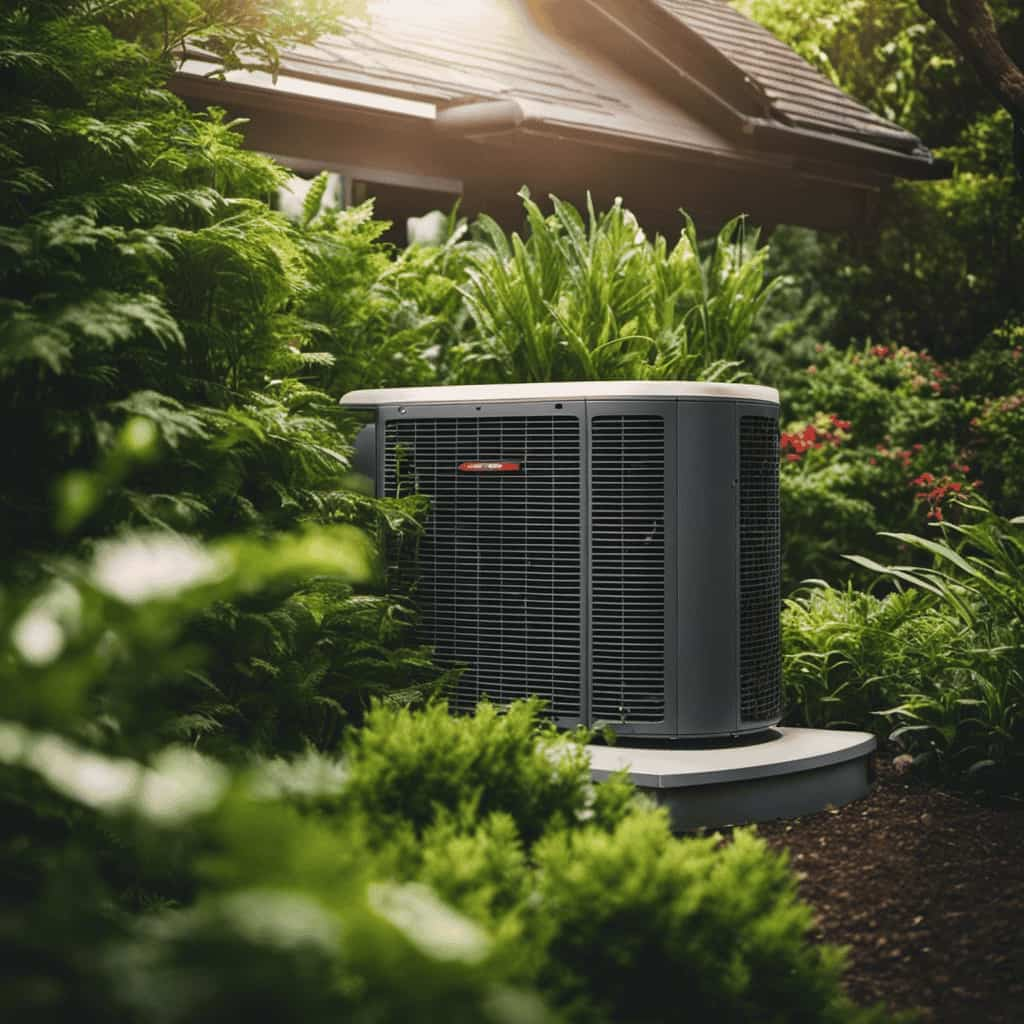
We believed we had a thorough understanding of sustainable home design, but our perspective changed when we learned about the impressive efficiency of heat pump systems.
In this article, we reveal the hidden benefits and secrets of these remarkable systems. From understanding energy efficiency ratings to tips for designing a sustainable home, we’ll guide you through the process of maximizing energy savings.
Prepare to be amazed by the innovations in heat pump technology that can transform your home into an eco-friendly haven.
Let’s dive into the world of heat pump systems and uncover their true potential.

Key Takeaways
- Heat pump systems significantly reduce energy consumption.
- Choosing a system with high SEER and HSPF ratings ensures maximum energy efficiency.
- Proper insulation and optimal system sizing are crucial for efficient heating and cooling.
- Regular maintenance helps maintain optimal system performance and energy efficiency.
The Benefits of Heat Pump Systems in Sustainable Home Design
One of the key benefits of heat pump systems in sustainable home design is that they can significantly reduce energy consumption. This advantage is especially important in today’s world, where energy efficiency is a top priority. By using heat pump systems, homeowners can lower their energy bills and reduce their carbon footprint.
Case studies have shown that these systems can achieve energy savings of up to 50% compared to traditional heating and cooling methods. Additionally, heat pump systems provide both heating and cooling capabilities, eliminating the need for separate systems and saving space.
They also offer precise temperature control and can be easily integrated with renewable energy sources such as solar panels. Overall, heat pump systems are a practical and efficient choice for sustainable home design.
Understanding Energy Efficiency Ratings for Heat Pump Systems
When it comes to understanding energy efficiency ratings for heat pump systems, we need to consider factors such as the Seasonal Energy Efficiency Ratio (SEER) and the Heating Seasonal Performance Factor (HSPF). These ratings are important in evaluating the performance of a heat pump system.

The SEER measures the cooling efficiency of the system during the cooling season, while the HSPF measures the heating efficiency during the heating season. Higher SEER and HSPF ratings indicate greater energy efficiency, which means lower energy consumption and cost savings.
It’s crucial to consider these ratings when choosing a heat pump system for your sustainable home. By opting for a system with high SEER and HSPF ratings, you can ensure maximum energy efficiency and reduce your environmental impact.
In the next section, we’ll discuss tips and considerations for designing a sustainable home with heat pump systems.
Designing a Sustainable Home With Heat Pump Systems: Tips and Considerations
To maximize the energy efficiency of our sustainable home, we should consider various tips and considerations when designing it with heat pump systems. Here are three key factors to keep in mind:

-
Proper insulation: Insulating your home effectively is crucial for reducing heat loss and ensuring that your heat pump system operates efficiently. Insulate walls, floors, and roofs to minimize heat transfer and maintain a comfortable indoor temperature.
-
Optimal system sizing: It’s important to choose the right size heat pump system for your home. Oversized systems can lead to inefficient operation, while undersized systems may struggle to meet your heating and cooling needs. Work with a professional to determine the appropriate size for your specific requirements.
-
Renewable energy integration: Consider integrating renewable energy sources, such as solar panels or wind turbines, with your heat pump system. This allows you to harness clean energy and further reduce your carbon footprint.
Maximizing Energy Savings Through Proper Heat Pump System Sizing
To maximize our energy savings, we need to ensure that our heat pump system is properly sized for our home. A heat pump that is too small will struggle to heat or cool our space efficiently, while a system that is too large will cycle on and off frequently, leading to increased energy consumption and wear and tear on the equipment. Proper heat pump sizing involves considering factors such as the size and layout of our home, insulation levels, and climate conditions. Consulting with a professional during the heat pump installation process is crucial to ensure accurate sizing. Additionally, regular heat pump maintenance, including cleaning filters and checking refrigerant levels, will help maintain optimal system performance and energy efficiency.
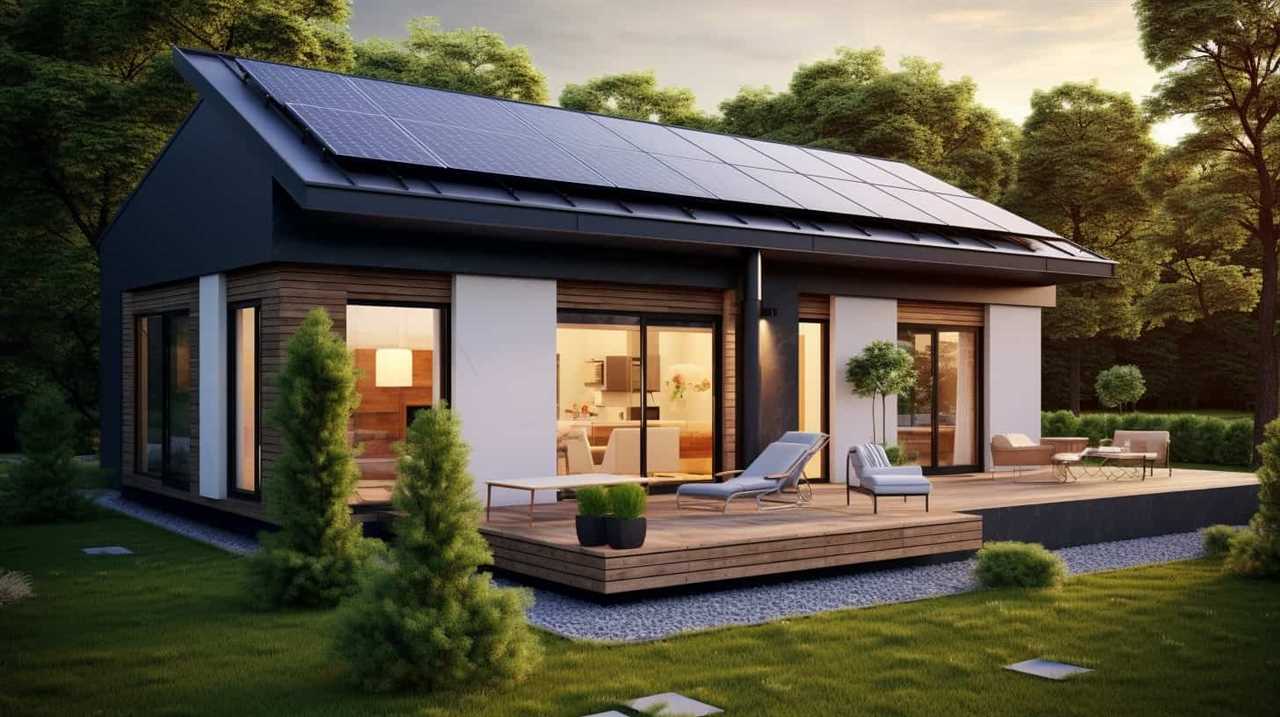
| Factors to Consider for Proper Heat Pump Sizing | |
|---|---|
| Size and layout of our home | Insulation levels |
| Climate conditions | |
| Consultation with a professional during installation | Regular heat pump maintenance |
Innovations in Heat Pump Technology for Sustainable Home Design
We have witnessed remarkable advancements in heat pump technology, revolutionizing sustainable home design. These innovations have brought about significant improvements in the efficiency and performance of heat pump systems, making them an increasingly attractive option for homeowners looking to integrate renewable energy sources into their homes.
Here are three key advancements in heat pump technology:
-
Variable speed compressors: These allow heat pumps to adjust their speed based on the heating or cooling needs of a home, resulting in more precise temperature control and increased energy efficiency.
-
Improved refrigerants: Newer heat pumps use environmentally friendly refrigerants that have a lower impact on the ozone layer and contribute less to global warming.

-
Smart controls and connectivity: Heat pumps now come equipped with smart thermostats and connectivity features, allowing homeowners to remotely control and monitor their systems, optimizing energy usage and reducing costs.
With these advancements, heat pump systems are now a reliable and efficient solution for sustainable home design, offering homeowners the opportunity to reduce their carbon footprint and save on energy bills.
Frequently Asked Questions
Are Heat Pump Systems Suitable for All Types of Homes, or Are There Specific Requirements?
Heat pump systems can be suitable for most homes, but specific requirements, such as adequate insulation and proper sizing, should be met. Consider heat pump system installation costs and the environmental impact when deciding on sustainability.
How Long Do Heat Pump Systems Typically Last Before Needing to Be Replaced?
Heat pump systems typically last around 15-20 years before needing replacement. Factors that affect their lifespan include proper maintenance, usage patterns, and the quality of the system’s components.
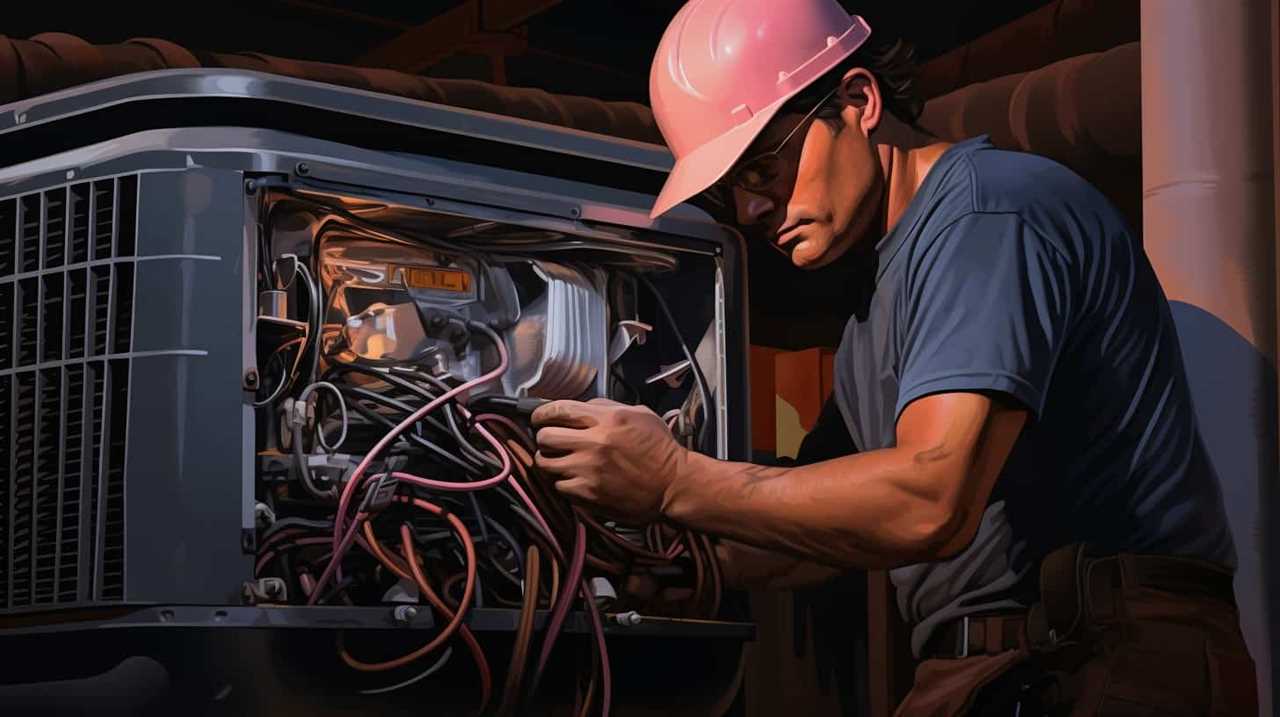
Can Heat Pump Systems Be Used for Both Heating and Cooling Purposes?
Yes, heat pump systems can be used for both heating and cooling purposes. They offer efficient temperature control in our homes. The benefits of using these systems include energy savings and a comfortable living environment.
Are There Any Government Incentives or Rebates Available for Homeowners Who Choose to Install Heat Pump Systems?
Government incentives and rebates are available for homeowners who install heat pump systems. These incentives are designed to encourage energy savings and make sustainable home design more accessible and affordable for everyone.
Are There Any Maintenance Requirements or Costs Associated With Heat Pump Systems?
Maintaining heat pump systems requires regular maintenance to ensure optimal performance. Costs associated with maintenance include filter replacements, annual inspections, and occasional repairs. However, these costs are outweighed by the long-term energy savings and environmental benefits.
Conclusion
In conclusion, heat pump systems are a symbol of efficiency and sustainability in home design.

Their energy efficiency ratings and innovative technology make them a practical choice for those seeking to reduce their environmental impact.
By properly sizing the system and considering tips for sustainable design, homeowners can maximize energy savings and create a comfortable living space.
So, let’s embrace the power of heat pump systems and build a greener future for our homes.
-

 Residential and Commercial Applications3 months ago
Residential and Commercial Applications3 months agoBest Amana Heat Pump Reviews
-

 Thermal Energy Transfer3 months ago
Thermal Energy Transfer3 months agoBreakthroughs in Modern Heat Pump Systems: Thermal Energy Edition
-

 Residential and Commercial Applications3 months ago
Residential and Commercial Applications3 months agoBest Heat Pump
-

 Geothermal Heat Pumps2 months ago
Geothermal Heat Pumps2 months agoUpgrade Your Comfort with Our Efficient HVAC Systems
-

 Geothermal Heat Pumps2 months ago
Geothermal Heat Pumps2 months agoInnovative Geothermal Heat Pump Manufacturers Revolutionize Energy Efficiency
-

 Air Conditioning4 weeks ago
Air Conditioning4 weeks agoExploring Energy-Efficient Air Conditioning Heat Pumps
-

 Thermal Energy Transfer3 months ago
Thermal Energy Transfer3 months agoBoost Your Heat Pump Efficiency: Interactive Guide
-

 Residential and Commercial Applications3 months ago
Residential and Commercial Applications3 months agoBest Portable Heat Pump Heat & AC











